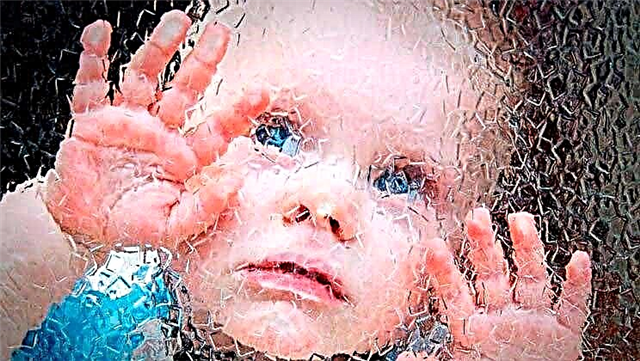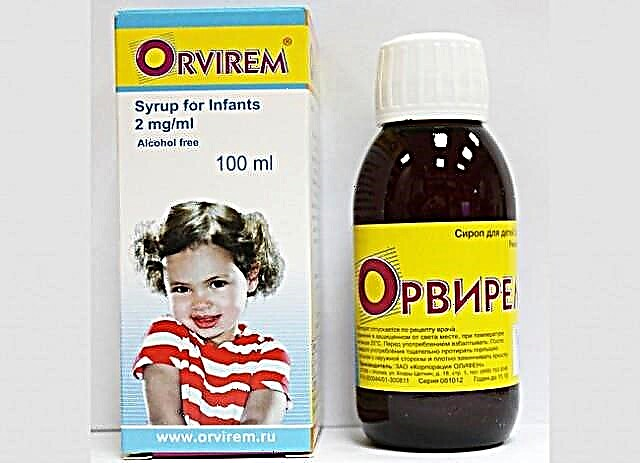Children and adolescents are the most vulnerable category of people. Sometimes they are unable to draw the line between good and evil, life and death. The risk of suicide in children is a serious problem. Every parent needs to be careful with their child so as not to miss the first signs of suicidal behavior.
How to watch out for suicidal behavior in a teenager?
Human mental health is one of the basic values of an individual and society as a whole. It is this indicator that determines the physical and social well-being of a person. Childhood and adolescence is accompanied by radical complex changes in the body and psyche.
In the formation of deviations in neuropsychic development, not only previous negative factors are important, such as maternal toxicosis during pregnancy, prematurity, birth trauma, and the effect of toxic substances. Microclimate conditions, relationships in the close environment of the child have a significant impact.
Dysfunction in the family, alcohol abuse of parents, poor relationships between family members lead not only to mental disorders of the child, but also to antisocial behavior and suicide. Suicide of children is inherently terrible, sometimes completely unpredictable.
A bit of terminology
- Suicide call the deprivation of life by one method or another.
- Suicidal thoughts - these are thoughts about the way of leaving the world, about the reaction of the people around, about the painfulness of the very process of taking one's own life.
- Suicidal intentions differ from suicidal thoughts in that a person begins to think over the details of the planned suicide: where, in what way, with the presence of witnesses or leaving a suicide note, etc. This is the first stage before the moment of preparation for suicide.
- Parasuicide - a kind of dramatization of the deprivation of life, carried out for show, in front of witnesses. Its main meaning is not leaving life as such, but getting what you want: attention, pity, fulfillment of requirements.
- Extended suicide characterized not only by the deprivation of life, but also by the murder of people around.
- Completed suicide case - fatal suicidal behavior.

Sad statistics
Sadly, Russia is among the leaders in the world in terms of suicide rates among children and adolescents. The indicators are more than 3 times higher than in other countries. Over the past decades, the peaks of suicidal activity were observed in the 1990s, then in 2002. The rate among adolescents remains high on average - about 21 per 100,000 people.
It should be noted that young men were more likely to commit suicide than girls: 33 and 8 per 100,000, respectively. Over the past 5-6 years, suicidal activity has been kept at the same level.
The quantitative indicator of suicides differs relative to the regions of the Russian Federation. The largest number of suicides among adolescents is recorded in the Chukotka Autonomous Okrug - 255 per 100,000 population. The lowest figure is in Chechnya - up to 2.3 per 100,000 population. Thus, the southern regions and regions of the country are characterized by a lower death rate from suicides than the northern regions (Chukotka, Buryatia, Altai, Yakutia, Tyva, Khakassia, Irkutsk, Kamchatka, Kalmykia).
Despite such high rates of suicide rates, even these statistics are not able to fully reflect the real picture of suicides. A colossal number of people who committed suicide remain outside the mental health service's reporting lines.
This is due to various reasons, such as denial by relatives of what happened, problems with insurance companies, etc.
The first "bells"
It is not so easy to recognize and prevent suicide, because not every person planning suicide communicates their intentions to others.
The risk of suicide increases significantly in the presence of depressive disorders in the mental state.
The first clear signs of a possible suicide in children and adolescents is a depression.
The main points to look out for are:
- depressed mood;
- loss of appetite;
- apathy;
- sleep disturbance (nightmares, superficial, anxious and light sleep, insomnia or increased sleepiness);
- thoughts and statements about unwillingness to live;
- decline in school performance;
- limiting communication with friends and acquaintances;
- tearfulness,;
- refusal to attend studies and sections.

What are the types of suicidal behavior?
Suicidal behavior is what we can see on the surface without affecting the deepest feelings of the adolescent.
Affective disorders
Emotional changes are mostly due to anxiety and depressive symptoms. Depression must be present in the mental state for a long time. It manifests itself in pronounced emotional experiences, decreased interests, anhedonia, self-accusation, lack of desire to perform actions that previously brought joy.
Painful unpleasant sensations in the body, weakness, and causeless anxiety may appear.
Demonstrative behavior
Aggressive outbursts are observed not only within the family. Asocial and deviant behavior is largely promoted by unfavorable peer groups. Difficulties also arise in communicating with teachers. Rude delinquent behavior is caused by the protest of the individual against the system of established values.
Suicide in this case is only a way to get what you want, a person does not have a true desire for death.
Causes of suicide in adolescence
The suicidal behavior of adolescents is a consequence of pathologically altered soil. It is a single and ongoing process. In the process of growing up, any person has eternal questions: “Who am I? What I can?"
Usually, in painful moments, the child reaches out for help and advice from loved ones. But parents are so busy with themselves or with work that sometimes they forget that a child, no matter how old he is, needs mom and dad, their warmth and care.
Many factors lie in the genesis of suicides - heredity, personality traits, the formation of the nervous system, impaired neurotransmitter systems, impaired social interaction, etc.
Lack of Conscious Understanding of Death
In childhood and adolescence, due to youthful maximalism and immaturity of judgments, life is not seen as something finite. There are no boundaries between good and evil, black and white, life and death.
Children early become interested in vital philosophical questions: how did I come about? What do you mean died? What is the soul? It is important that an adult can explain to a child the meaning of concepts and processes of interest so that death is perceived correctly by a little man.
Early sexy debut
In adolescents, due to hormonal surges, sexual desire is increased. Sexual determination is just beginning. Teenagers are becoming interested in everything related to sex. Those children who are lagging behind in sexual development can become objects of abuse by their peers.
Sexual deviations in adolescence are temporary; by the time they enter adulthood, they disappear completely. Often this behavior is associated with alcohol consumption. Psychoactive substances affect attraction, namely, enhance them in some, while others, on the contrary.
Psychical deviations
Deviations of this kind are associated with the pathogenic effect of the microsociation, mainly the family. The reasons may be the breakdown of the family, the presence of conflict relations between relatives, asocial behavior of parents (alcoholism, drug use). Emerging neurotic disorders, depressive conditions can lead to suicidal behavior.

Physical disabilities
A teenager during puberty may feel that the proportions of the body are changing excessively, the body becomes a stranger. Due to hormonal disruptions, problems with the skin and body weight begin. To a growing protesting person, these changes seem simply unbearable. The child may sincerely believe that these "deformities" are not comparable to life.
Certain physical disabilities are found, perhaps, in any person. But in a children's group for peers such a person can become an outcast or the subject of constant ridicule and bullying, which is a difficult moral test and often leads to suicide.
Signs of impending suicide
Signs of suicidal behavior in adolescents can include emotional, behavioral disturbances. In some cases, preparation for suicide cannot be detected by external signs.
Suicides can be conditionally divided into several groups:
- hidden: thirst for risk, dangerous hobbies, self-harm;
- true: with the desire to die;
- demonstrative: blackmail by death to get what you want.
It should be noted that true suicidal acts are rarely spontaneous. Nearly all adolescents are signaling disaster in some way that go unnoticed.

Depressive states
The main symptoms inherent in depression have the same manifestations in children: a persistent decrease in the background mood for 2 weeks or more, a decrease in mental and physical activity. Outwardly, this is manifested by a decrease in school performance, the difficulty of assimilating new material and reproducing what has already been learned.
The child does not want to communicate and have fun, do his favorite activity, go to school. Appetite and sleep are impaired. There are possible statements about the lack of desire to live and about their worthlessness.
Behavioral signs
In some cases, demonstrative blackmailing behavior can be observed. The child makes demands and threatens adults with suicide if these demands are not met.
A teenager can share his plans for suicide with close friends, post phrases about his intentions on his page on social networks.
Emotional disturbances
During adolescence, mood swings ranging from depressive to upbeat can occur. Life can seem completely worthless and bring serious suffering to the growing person.

Timely seeking help and diagnostics
Signs of suicidal behavior are most often found in a teenager's conversation, in his attitude to the world and his future.
For any statements about unwillingness to live, even if it is in the form of blackmail on the part of a child, you need to seek specialized medical help. First, to a medical psychologist, then, if necessary, to a child and adolescent psychiatrist. Suicidal behavior should only be diagnosed by a qualified and certified psychiatric specialist.
There are special helplines where qualified specialists provide assistance in difficult situations remotely, quickly and anonymously.
Preventive actions
General preventive measures, first of all, include the creation of favorable socio-economic, socio-pedagogical conditions, assistance to the institution of the family, the full implementation of education for children and adolescents.
Special prevention should be directed at children from risk groups, deviant adolescents. It is necessary to protect children from the influence of an asocial environment, cruelty, violence, and from parental neglect.
Seeking medical attention promptly can prevent suicide from occurring.
In the age of information technology, special attention should be paid to protecting the child on the Internet. Virtual groups and clubs are dangerous. Teenagers visit these pages for various reasons: out of curiosity, to prove themselves, to arouse compassion for themselves. But in a number of cases there is a mutual provocation of each other to active suicidogenic actions. Mass suicides are the result of such a campaign.
It is necessary to disseminate as much reliable information as possible, to highlight the problem of suicides from the right perspective. It is possible to form a true idea of the population about suicide by conducting thematic lectures and educational events in schools and colleges by specialists in the field of suicidology.

To help parents
Providing suicide treatment is a complex and multilevel process. It should involve not only parents, but also specialists of various profiles: teachers, psychologists, medical and social workers. Only together is it possible to create a happy childhood and the future of our children!
Daily regime
Normalization of biological rhythms of sleep and wakefulness is important in the prevention of affective disorders, in particular, depression. It is necessary to competently organize the day of the growing body - alternate study and rest, physical activity and relaxation.
The child's time should be scheduled by the clock, then there are less chances of antisocial and addictive behavior. Limit spending free time at the computer, playing violent and aggressive computer games. The child does not clearly understand the line between reality and fiction.
Communication with the child
When a child asks for advice, turns to you, insistently demands attention, put aside your important business and listen. Perhaps the child just needs to feel your presence and participation. Approval, voicing your feelings are important keys to your child's heart and feelings.
No disputes
Reproaches and arguments lead to conflicts in the family. The gap between parents and children grows wider with each dispute. Remember! Misunderstanding between the closest people can be a powerful impetus for adolescent suicide.
Learning to listen carefully
- For your child to trust you, become an attentive listener.
- Don't interrupt, ask about feelings, ask clarifying questions.
- Offer to solve the problem together, help in word and deed.
- Build your child's belief in a positive outcome of circumstances.
Block websites and programs that highlight suicide issues. Children and adolescents are the most vulnerable category of the population. Be attentive and vigilant! Some sites encourage you to join the "game" and carry out assignments. The end result of this quest is the order to kill yourself. Control the flow of negative information to your child!

Tips for educators
In any ambiguous situation, conflict, deviant behavior of the child, it is necessary to seek help from a psychologist. Within the framework of school education, one should not focus on the negative actions of a teenager, on an asocial family in which he can be brought up. The basic rule is that you must become a friend and mentor who will direct you on the right path in time.
Where can I find help?
Outpatient care is carried out in psycho-neurological dispensaries by psychiatrists and psychotherapists, anti-crisis care rooms, at anonymous appointments. The helpline service operates around the clock. In any difficult situation, a qualified specialist will provide anonymous and urgent assistance.
Treatment approaches
Drug therapy
In the absence of a threat to life, the doctor assesses the severity of depressive symptoms, the characteristics of a person's personality warehouse.The therapy is carried out with a group of antidepressant drugs. The preference is more often given to the group of selective serotonin reuptake inhibitors (SSRIs): Paroxetine, Sertraline, Escitalopram. The duration of taking the drugs is from 5 to 6 months of active treatment, followed by a transition to supportive therapy.

At the beginning of taking antidepressants, small dosages of tranquilizers (Phenazepam, Grandaxin) are prescribed. These medications reduce anxiety levels and normalize sleep.
It is possible to use antipsychotics in small doses for acute psychotic symptoms (Teraligen, Risperidone, Chlorprothixene).
Psychotherapy
Psychotherapy is a major component in the therapy of suicidal behavior. The choice of the method of psychotherapy is selected by the doctor, based on the characteristics of the conflict situation, personality and goals.
The family should also be directly involved in the treatment and contribute to the establishment of correct and trusting relationships between relatives. The family is a litmus test for identifying problems that can lead to suicide.
Particular importance is attached to establishing communication between the patient and peers and adults, the formation of positive thinking and the prospects for their future.
Group therapy has a positive effect, because only in a circle of like-minded people does a teenager feel needed and significant. The person more easily shares their experiences and is actively supported by other members of the group.
Art therapy is widely used in children. Children are very vividly and figuratively able to convey the features of a traumatic situation, internal experiences. With the help of creative psychotherapy, the doctor, together with the patient, find a way out of a difficult situation, activate internal reserves and abilities. The techniques are different: the image of artistic images, music therapy, drama therapy.

Conclusion
The suicide of children and adolescents is not accidental. Suicide, as an ongoing process, is being thought out and prepared. Preparation for suicide can take from several days to months. A teenager, despite the increased conflict in the transition period, is drawn to adults, looking for help, support and empathy. The last point is the indifference of parents, inattention of loved ones.
The provoking factor in the development of suicide in children in most cases is in the family. Psycho-traumatic situations can be conflicting relationships between family members, asocial behavior of parents, the inability to independently resolve the conflict.
So, the child feels lonely and abandoned, does not see the point in his further existence. The emotional outbursts and physical disabilities of the teenager, and the unfavorable influence of the peer group, and the misconception of death all matter.
In the fight against suicidal behavior in adolescents, not only parents should be actively involved, but also other specialists of various profiles. The socio-pedagogical component should be aimed at teaching the younger generation to communicate with peers and adults, to form a positive vision of their future.
Medical workers are ready to help at any time in solving a difficult life situation, especially when a person is on the verge of choosing between life and death.
The main direction in the treatment of the prerequisites and consequences of incomplete suicide is psychotherapy. The psychotherapist selects the method of treatment individually, based on the complexity of the traumatic situation and the characteristics of the person's personality. If necessary, drug therapy can be connected to the treatment.
Treatment is carried out with such groups of drugs as antidepressants, tranquilizers, antipsychotics. The duration of therapy depends on the number of episodes of suicidal behavior in the history, the severity of emotional disorders.



